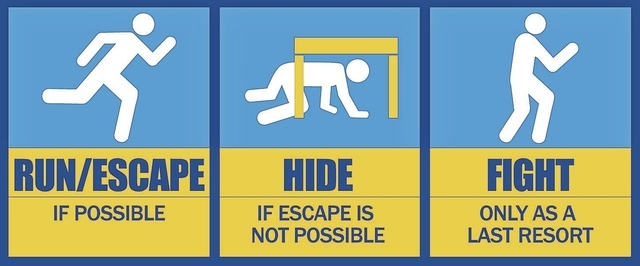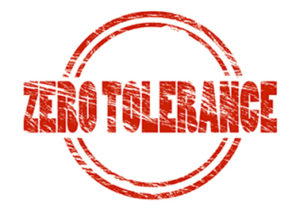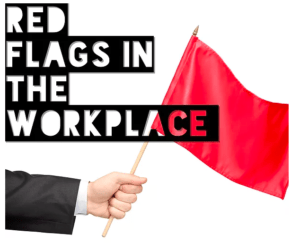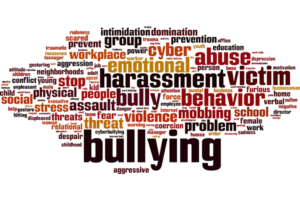 Mass shootings have dominated the news, but not every instance of workplace violence generates national headlines. Each year, an average of nearly 2 million American workers report having been a victim of violence at work, according to the Occupational Safety and Health Administration.
Mass shootings have dominated the news, but not every instance of workplace violence generates national headlines. Each year, an average of nearly 2 million American workers report having been a victim of violence at work, according to the Occupational Safety and Health Administration.
And the U.S. Bureau of Labor Statistics puts the number of annual workplace homicides at about 400. You can’t go a week or two without some sort of incident, it seems nowadays. HR professionals need to recognize that this is the world we live in right now.
Recognition is only the first step. In most organizations, it’s HR’s responsibility to make sure dispensary workers know how to stay safe in the face of a threat. And with a steady stream of violent workplace episodes occurring, it is more important than ever to train employees to respond appropriately such as through Dispensary Active Shooter training.
Their lives may depend on it, HR professionals need to recognize that this is the world we live in right now.
Training Cannabis Dispensary Workers

The most effective prevention plan is one that is put in place long before trouble occurs. Employees need to understand what to do in an emergency and what the company’s response will be, no one responds well to a situation that they aren’t prepared for.
While there aren’t any formal government standards in place for training workers, it’s a good idea to provide instruction. Most experts recommend teaching people to run, hide or fight – in that preferred order. We train dispensary workers to do whatever they feel they can do at the time, so they feel empowered.
We tell them to assess the situation. If they feel there is a path to escape, it’s always better to run to safety. If they don’t believe they can get out safely, they know to hide.
2 Million: Reports of Workplace Violence
 The number of American workers who report having been a victim of workplace violence. If they can’t hide and are exposed, they should pick up whatever is nearby – chairs, books, a fire extinguisher – and throw it at the assailant.
The number of American workers who report having been a victim of workplace violence. If they can’t hide and are exposed, they should pick up whatever is nearby – chairs, books, a fire extinguisher – and throw it at the assailant.
While the guidance used to be to stand down, most trainers today encourage anyone caught in the open to say “we’re not dying today” and put up a fight – an approach endorsed by the Homeland Security Department a few years ago.
The exception typically is workplaces in which other people can’t fight back and who may be put at risk, such as hospitals and assisted living facilities. Yet many schools adopt this approach, employees can take training that includes discussions of potential threat scenarios, a graphics instruction video, or role-playing with security staff.
400: Average Number of Homicides
 The average number of workplace homicides annually. The training may be disturbing to some dispensary workers, but it is helpful. In the instance of violence, workers may never know how they are going to react. Some may sit down and cry, for example, while others run straight for the exits.
The average number of workplace homicides annually. The training may be disturbing to some dispensary workers, but it is helpful. In the instance of violence, workers may never know how they are going to react. Some may sit down and cry, for example, while others run straight for the exits.
Role-playing could help people prepare for how they might respond by exposing them, in a safe environment, to what may take place in a time of crisis. While the training is not mandatory, it is encouraged.
The phenomenon of active assailants is frightening and understandably uncomfortable to discuss. But, preparation is about giving people the knowledge to make the right decisions, before help arrives, to protect themselves and their co-workers if they suddenly find themselves in a bad situation.
Looking for Workplace Red Flags
 Use pre-employment background checks to make sure your organization isn’t hiring people with recent histories of aggression. Don’t hire anyone who has been charged with or convicted of a violent crime, including domestic cases, in the last 12 to 24 months.
Use pre-employment background checks to make sure your organization isn’t hiring people with recent histories of aggression. Don’t hire anyone who has been charged with or convicted of a violent crime, including domestic cases, in the last 12 to 24 months.
Domestic incidents are often harbingers of more-widespread violence. A past domestic violence conviction might give me pause if the individual has unresolved anger issues that I don’t want to bring into the dispensary workplace. Shooters in several recent workplace incidents had histories of domestic abuse.
Work can be a danger zone for those with an abusive partner because often it’s the only place a perpetrator can confront his or her victim. Make sure workers understand it’s their responsibility to notify HR if they have a protective or restraining order against someone and to provide HR or security with a copy of the order.
Work can be a danger zone for those with an abusive partner because often it’s the only place a perpetrator can confront his or her victim. Experts recommend adopting a zero-tolerance workplace violence policy that defines acts of aggression and the circumstances under which employees are required to notify HR if they have a court order against an individual.
Knowing that information helps HR and security proactively protect staff.
Preventing Threats from Within Workplace
 When you’re concerned about the behavior of someone within your ranks, the first step is to establish whether the individual poses a direct threat to others. If he or she does, the employer can lawfully exclude that person from employment for safety reasons under the Americans with Disabilities Act.
When you’re concerned about the behavior of someone within your ranks, the first step is to establish whether the individual poses a direct threat to others. If he or she does, the employer can lawfully exclude that person from employment for safety reasons under the Americans with Disabilities Act.
If there is a potential for an immediate threat, that situation has to be quickly assessed and the violent employee needs to be removed. Since HR typically relies on others to alert them when a person is acting out, teach your workforce to recognize the warning signs of potential violence, which may include angry outbursts, direct or indirect threats, and sudden changes in behavior and work performance.
It’s also important to ensure that workers feel comfortable sharing their concerns with you. Listen to employees coming to you and using words like ‘bullying‘ and ‘intimidation.’ The minute someone says, “I don’t feel safe,” it’s time to investigate and be sure dispensary employees receive education such as Active Shooter training.
It’s unlikely that a person will suddenly come to work brandishing a gun without first acting out in some way. Often their erratic and intimidating behavior has been building up for days or weeks and then escalates. Many companies set up a confidential hotline to allow workers to report what they see and hear without fear of retaliation.
If you go that route, be mindful of the possibility that people could target others for the wrong reasons. If employees say they are concerned about an employee primarily because they’re a Muslim or a veteran, HR is responsible to make sure we’re not letting stereotypes and fears govern our actions.
Ask questions to determine if there is a legitimate threat based on something the person has said or done, such as a dispensary worker expressing a desire to hurt himself or others. A breakdown of the 409 workers in private industry and government who were victims of workplace homicide in 2014 shows that:
- 83% were men
- 49% were white
- 32% were working in retail
Showing Workplace Respect and Empathy
 Whether you’re talking with an employee about changing his or her behavior after an angry outburst or you’ve determined that the individual should be terminated, treat the person with respect and consideration.
Whether you’re talking with an employee about changing his or her behavior after an angry outburst or you’ve determined that the individual should be terminated, treat the person with respect and consideration.
The best thing you can do in those cases is to listen to them, let them feel like they are being heard, empathize with them and try to understand their situation so you can best help them work through it. But also be firm and unequivocal so they understand that displays of anger aren’t acceptable in the dispensary workplace.
Think about who should speak with a worker who has displayed anger issues. Generally, it’s a good idea to have both the manager and an HR professional present so that one can do most of the talking and the other can listen and empathize.
If you’re dealing with someone prone to angry outbursts, don’t block yourself behind a desk without clear access to an exit. The best place to meet is an empty conference room where there is nothing on the table that could be used as an improvised weapon.
Involving Law Enforcement
 If an employee has made a direct threat or gives you a reason to believe they’re dangerous, don’t be afraid to contact the police or bring in paid security.
If an employee has made a direct threat or gives you a reason to believe they’re dangerous, don’t be afraid to contact the police or bring in paid security.
Unfortunately, it doesn’t take much for a person with a short fuse to take matters into his or her own hands. If someone is mad enough, has a mental disorder, or is passionate enough about things, it doesn’t matter if there are cameras, witnesses, and policies in place that say you can’t bring weapons in.
In other words, while you can – and should – take steps to ensure workers’ safety by hiring good people and raising awareness, you can never eliminate risk. While no one wants to contemplate the possibility of horrific violence, preparing employees for the worst could help them make it through with the only thing that truly matters: their lives.
Let us know what you think.




Responses